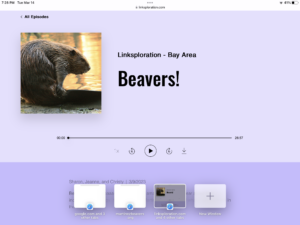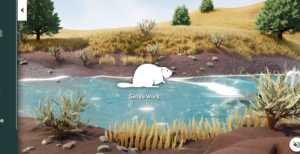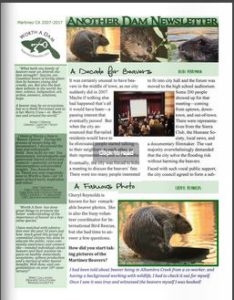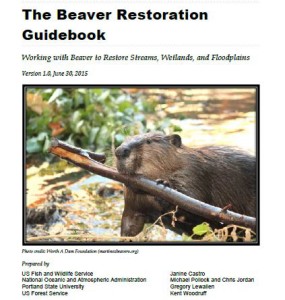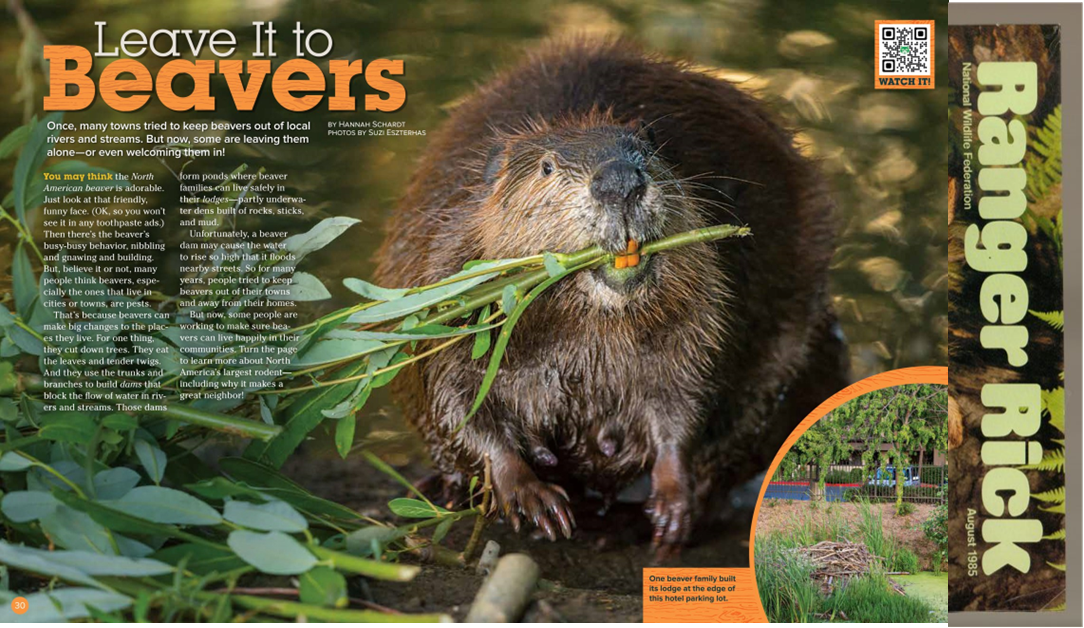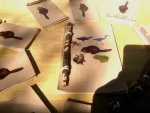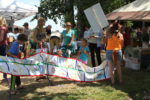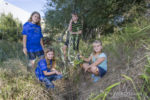 It’s that time of year when I am madly begging for donations to the silent auction. Sometimes people respond in heart-warmingly generous ways that affirm the essential goodness of mankind, and sometimes they do the other thing, which is never fun. But not un-useful, as the woman who was offering this print wouldn’t donate OR tell me where it was from, but WOW I love this image, and now I have my own mystery!
It’s that time of year when I am madly begging for donations to the silent auction. Sometimes people respond in heart-warmingly generous ways that affirm the essential goodness of mankind, and sometimes they do the other thing, which is never fun. But not un-useful, as the woman who was offering this print wouldn’t donate OR tell me where it was from, but WOW I love this image, and now I have my own mystery!
She said did say it was from the 40’s, but it doesn’t look American to me. Since the English haven’t had beavers for 500 years I’m thinking maybe its from a Canadian children’s book? I know what you’re thinking, those beavers are kind of zombie like, but still its SO cute with the little girl helping them mud, don’t you think?

Anyway I tried to hunt around for it and the only other image I came across of children with beavers was this one, which made me smile and think of Skip Lisle. The mystery continues. Ask your moms and grandmas if they ever saw the image before, will you?
I’m happy to say I received a wonderful note from author Judith K. Berg (and her husband) after I wrote her thanking her for that fantastic letter to the editor. They were both pleased and impressed with our story and the website and had so many good things to say about beavers, I was very chuffed. I think she is going to donate signed copies of her books to the auction so you will get to read all about it!
Yesterday this article caught my eye, and I heard from a group that is talking to the lawyers involved to do the same thing in California. I’m wondering how all this is going to play out. Although if the government shut down continues it won’t make much of a difference!
How to Successfully Threaten Legal Action Against the Government
In a move that has left beaver, salmon, and wildlife advocates pleased, the federal government and state have agreed to stop killing beavers in the state of Oregon in response to a threat of litigation by wildlife groups.
If you’re wondering how wildlife groups can get what they want by simply threatening litigation, then you should probably take a look at their Notice of Intent to Sue. The notice letter goes to painstaking detail to explain exactly why beavers need to stop being killed, and how animals like beavers serve important roles in helping the threatened salmon population. Given that the letter worked, it seems worthwhile to examine a few of the things it did right.
Deterrence in the Details
In the letter, there is no shortage of details about how beavers modify the habitat of salmon, and other animals, to all the species’ benefits. By helping the salmon thrive, the wildlife groups claim that the beavers should be protected under the Endangered Species Act.
Basically, by creating dams, beavers help salmon by creating bigger pools for them to rest and feed, as they make their way up or down stream. Also, proposed alternatives to killing the beavers are included, since beavers do cause quite a bit of trouble for landowners, public utilities, and sometimes, even roadways (that are near rivers or streams, or connect to bridges).
In addition to all that, the very important detail about there being no environmental impact analysis seems to have played a big part in prompting the government to take action. In addition to the immediate cessation of the killing of Oregon’s beavers, an environmental impact analysis will be completed.
Make Compliance Easy
In addition to listing out all the reasons why the government should agree to their demand, it made compliance rather simple. All the government needed to do was simply stop killing beavers until after it conducted an assessment on the effects of doing so. There was no astronomical damages demand, and attorney fees were not even sought for putting together the required demand. When you want a demand (or any request for that matter) to be accepted, making sure it’s a simple ask can go a long long way.
I love how this article lays out what they did RIGHT. It’s practically a recipe for doing this again in other states.I can’t imagine Washington and California will be far behind, I showed it to our retired attorney friend who argued the land-breaking case in Riverside on the grounds that removing beaver required a CEQA analysis, and he was very pleased as well.
There’s more to this than meets the eye, and maybe it will make more of an impact that I guessed. Now if you’ll excuse me, I have a mystery to solve.
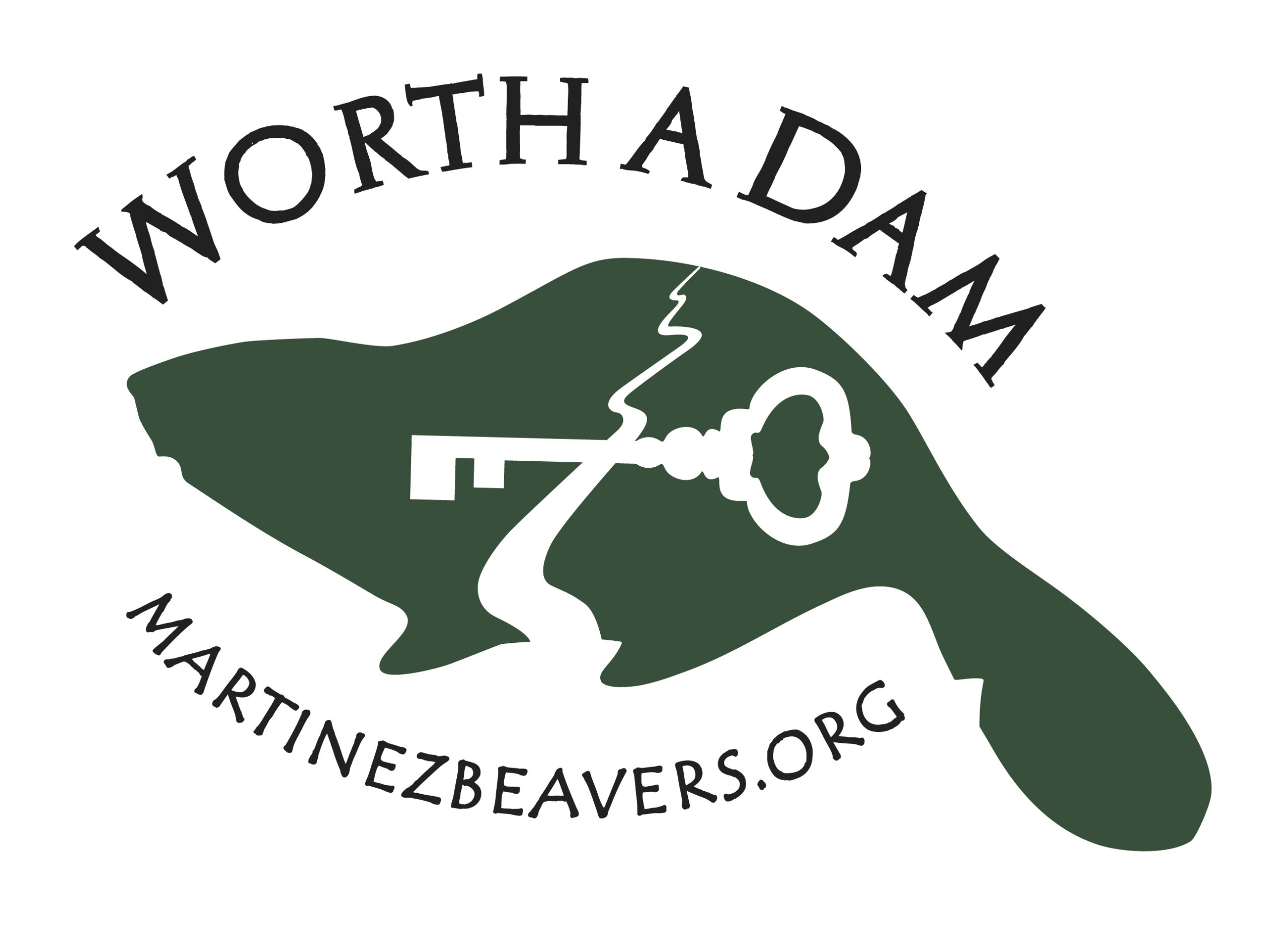



 What he found is that beaver dam amount for a small fraction of overall snowpack water, but that they do indeed contribute. I guess the moral of the story is “Don’t screw up your climate!” And if it so happens that you are so stupid you do mess up your climate, then the moral is “You better have a LOT of beavers around to do what they can.”
What he found is that beaver dam amount for a small fraction of overall snowpack water, but that they do indeed contribute. I guess the moral of the story is “Don’t screw up your climate!” And if it so happens that you are so stupid you do mess up your climate, then the moral is “You better have a LOT of beavers around to do what they can.”
 The next Northern Region, Alaska Section, AWRA Monthly Brown Bag Presentation will be given by
The next Northern Region, Alaska Section, AWRA Monthly Brown Bag Presentation will be given by 

 This sounds basically like beavers always make a difference but in the right shape streams they make a bigger difference. Fair enough. The article goes on to talk about other kinds of ecosystem engineers and how one should be careful to only put in native ones. Really? Somebody is STILL researching this? They talk about macrophytes as engineers of streams to which I say HRMMPH! When has anyone ever had a macrophyte festival?
This sounds basically like beavers always make a difference but in the right shape streams they make a bigger difference. Fair enough. The article goes on to talk about other kinds of ecosystem engineers and how one should be careful to only put in native ones. Really? Somebody is STILL researching this? They talk about macrophytes as engineers of streams to which I say HRMMPH! When has anyone ever had a macrophyte festival? river otter population in the Colorado Rocky Mountains. Because beavers occupied many of the same sites as otters in my 40-mile stretch of watershed, I documented their behaviors as well.
river otter population in the Colorado Rocky Mountains. Because beavers occupied many of the same sites as otters in my 40-mile stretch of watershed, I documented their behaviors as well. “Given the flexibility of beaver behavior, perhaps we would be better to manage human activity, to use preventive measures to avoid problems with beavers, and to reap the benefits of living with beavers.”
“Given the flexibility of beaver behavior, perhaps we would be better to manage human activity, to use preventive measures to avoid problems with beavers, and to reap the benefits of living with beavers.”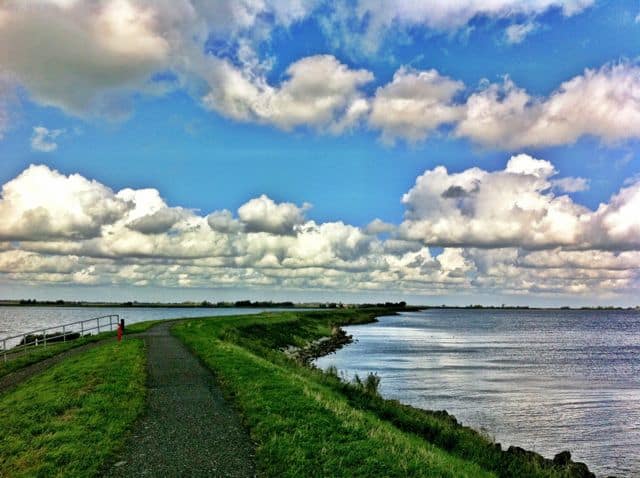 In a new study just launched by a number of Dutch district water boards and knowledge institutions, a team of scientists including statistical ecologist Emiel van Loon of the UvA Institute for Biodiversity and Ecosystem Dynamics will be researching the behaviour of muskrats, coypus and beavers. The two-year project is titled ‘Dyke Diggers in Focus’.
In a new study just launched by a number of Dutch district water boards and knowledge institutions, a team of scientists including statistical ecologist Emiel van Loon of the UvA Institute for Biodiversity and Ecosystem Dynamics will be researching the behaviour of muskrats, coypus and beavers. The two-year project is titled ‘Dyke Diggers in Focus’.


 For many millions of years, in what we now call the Applegate watershed of southern Oregon, beaver have been the senior landscape engineers. At least 12,000 years ago, humans arrived and established permanent culture alongside the beaver. In the language of the Takelma, the Applegate is called “sbink,” meaning Beaver Place.
For many millions of years, in what we now call the Applegate watershed of southern Oregon, beaver have been the senior landscape engineers. At least 12,000 years ago, humans arrived and established permanent culture alongside the beaver. In the language of the Takelma, the Applegate is called “sbink,” meaning Beaver Place.


